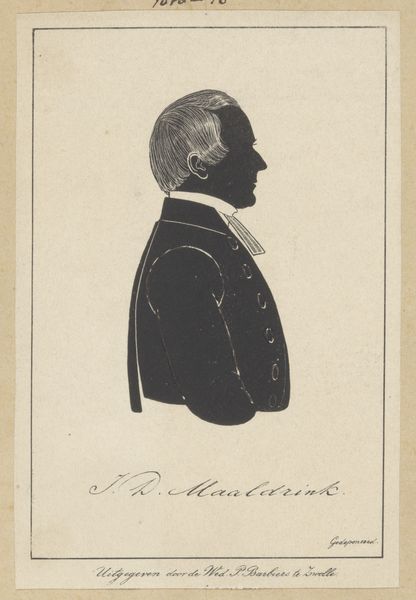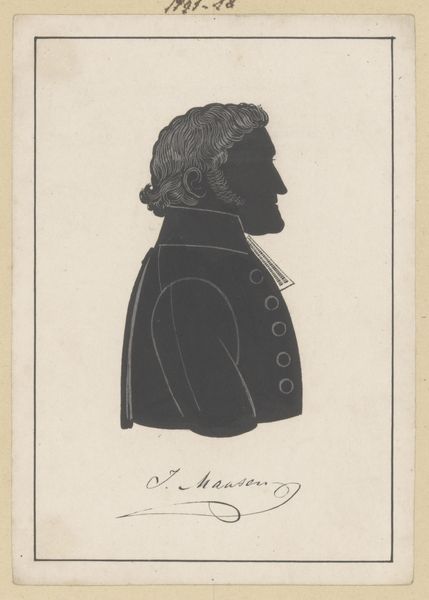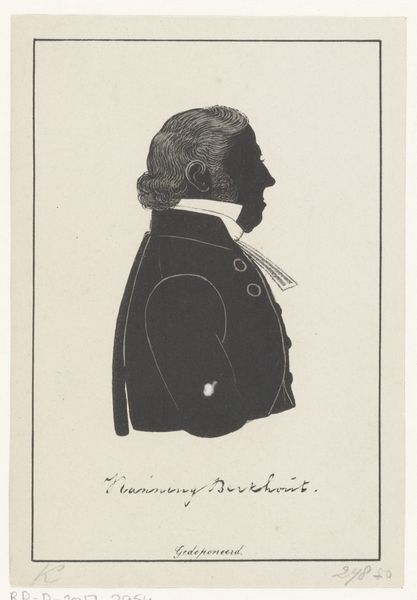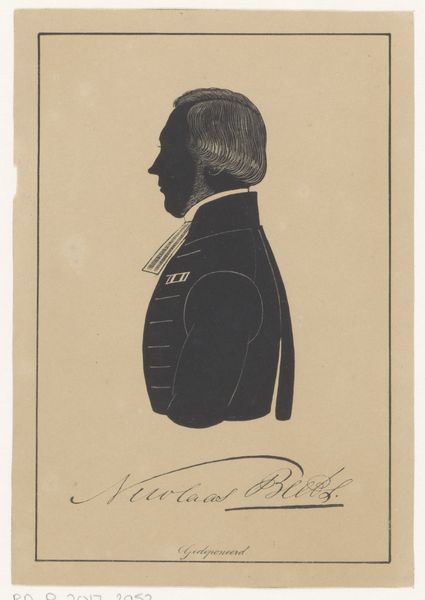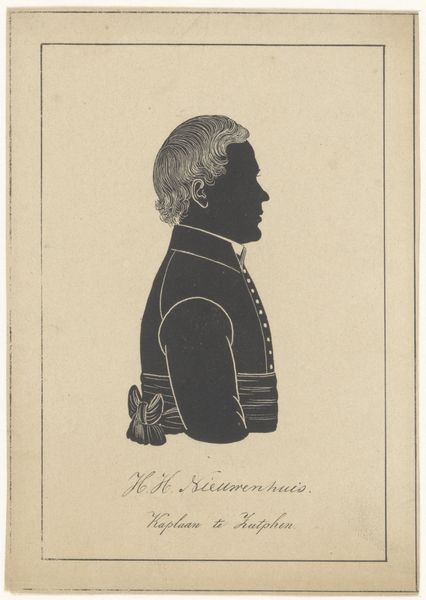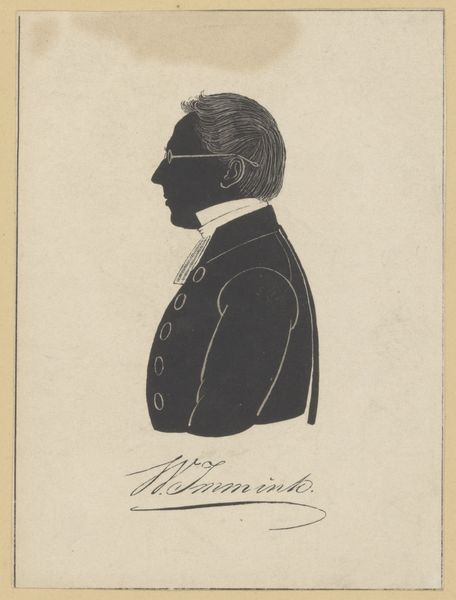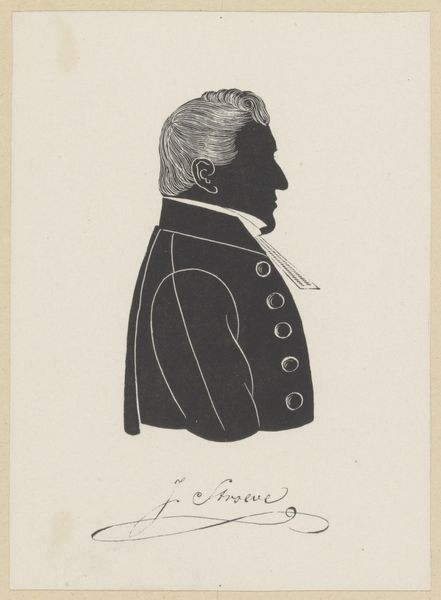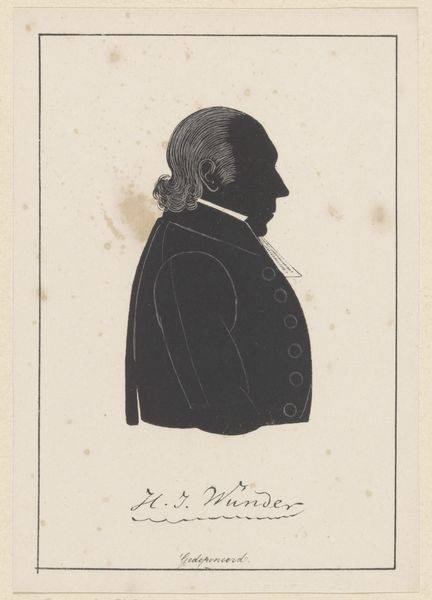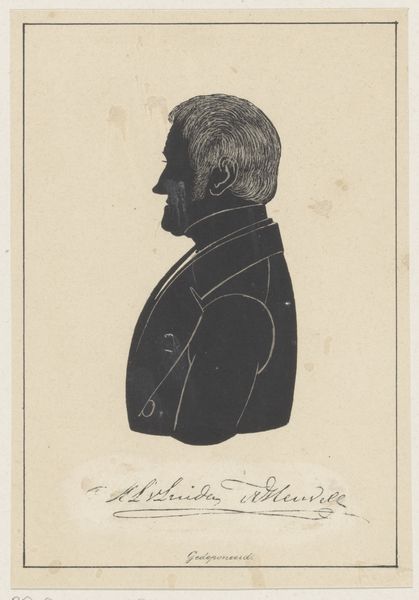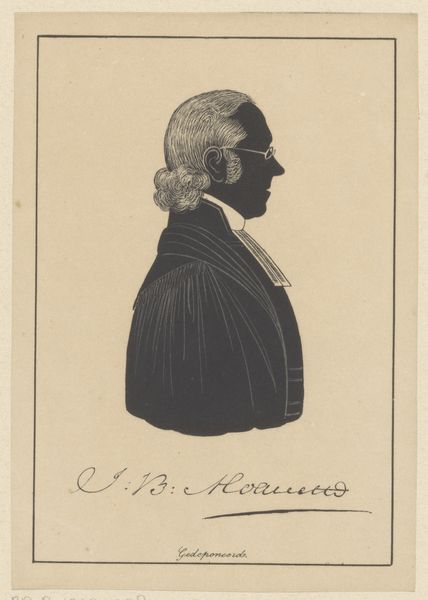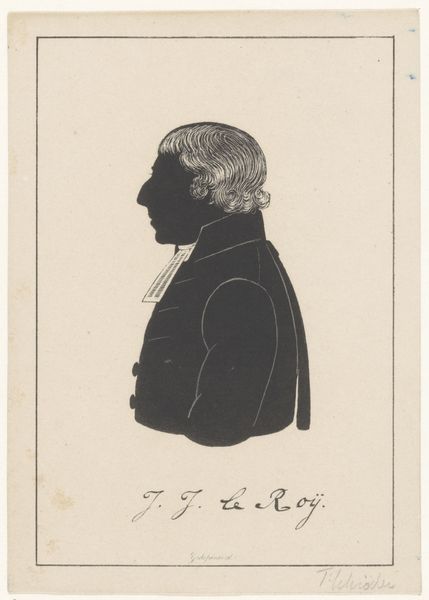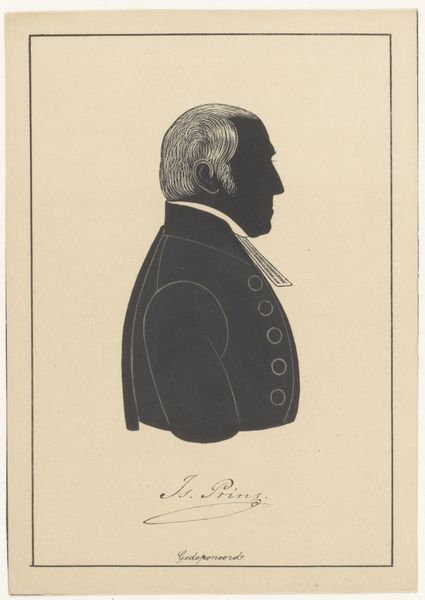
drawing, print
#
portrait
#
drawing
# print
#
old engraving style
#
caricature
#
romanticism
Dimensions: height 150 mm, width 108 mm, height 298 mm, width 241 mm
Copyright: Rijks Museum: Open Domain
Pieter Barbiers IV created this silhouette portrait of Leonardus Meenderink using black paper and scissors sometime in the first half of the 19th century. During this period, silhouette portraits were a popular and affordable alternative to painted miniatures, allowing a broader segment of the population to participate in portraiture. The stark contrast between the black silhouette and the white background highlights the sitter’s profile, emphasizing his features and attire. His clothing and the way he wears his hair indicate his social standing and profession, possibly suggesting he was a clergyman or a member of the educated middle class. The precision of the cut reveals the artist's skill in capturing a likeness and conveying character through minimal detail. Consider the emotional weight of capturing someone’s essence through a simple, yet profound, shape. Silhouettes, in their reduction and starkness, invite us to contemplate the relationship between appearance and identity, and the stories held within a single, carefully crafted outline.
Comments
No comments
Be the first to comment and join the conversation on the ultimate creative platform.
